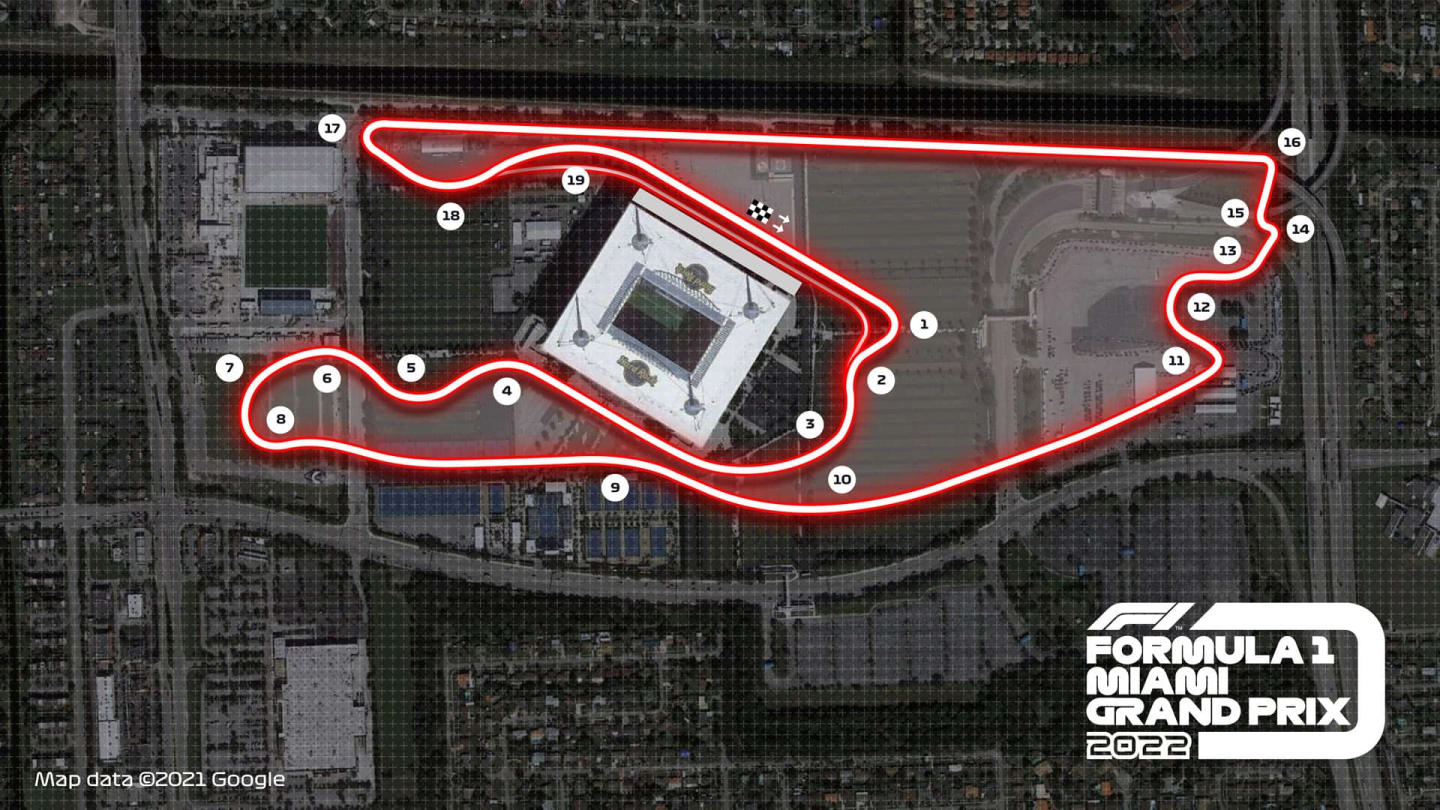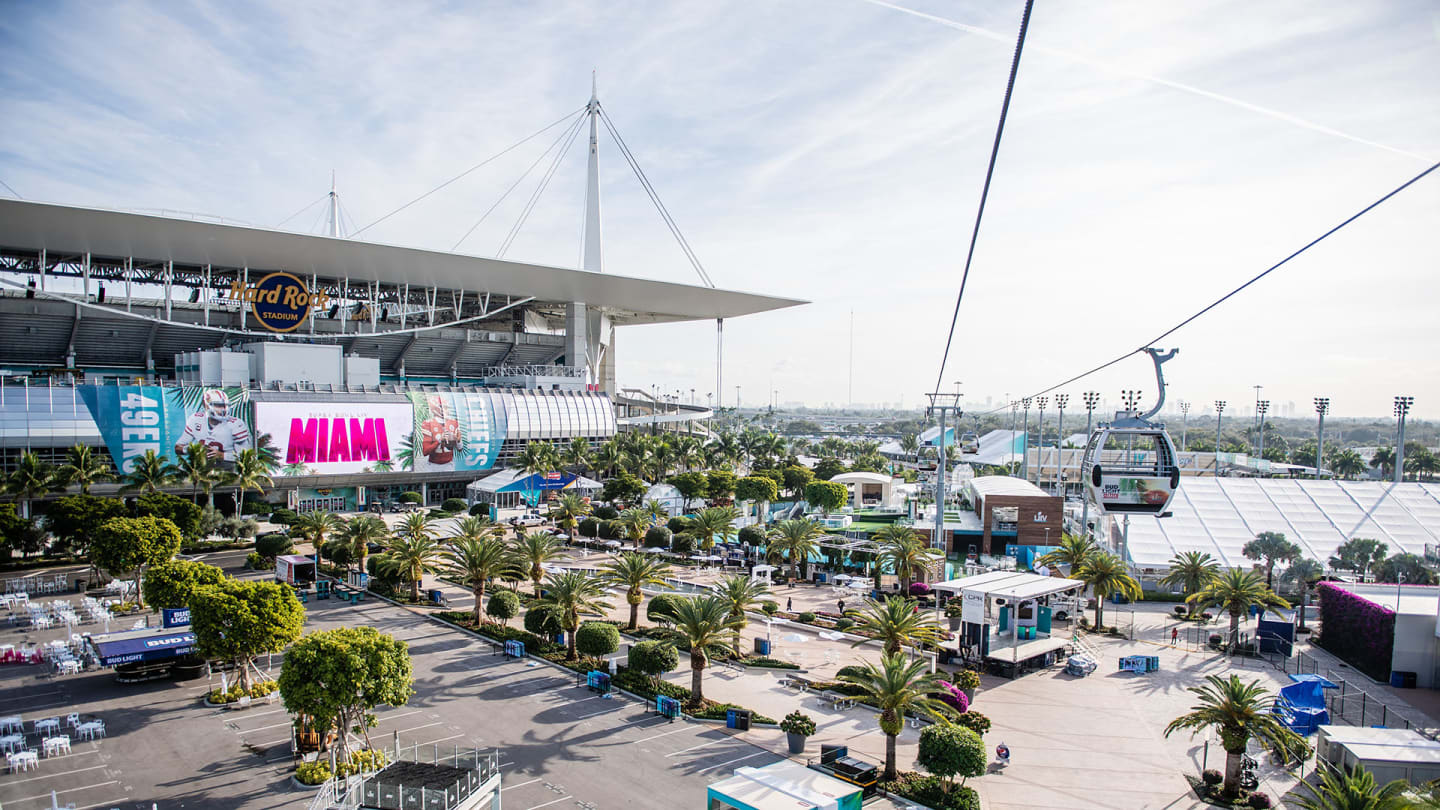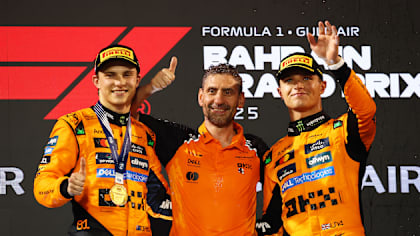
Feature
MIAMI GP: Everything you need to know about F1's newest race - including how the track was designed
Share

Formula 1 has struck a deal to host a second race on the shores of the United States of America, with Miami – famed for its sandy beaches, art deco vibe, vibrant multiculturalism and rich sporting heritage – set to join the calendar in 2022. Here’s your ultimate guide of what to expect from the 19-turn temporary street circuit – the US’s 11th F1 location – in Miami Gardens...
The race adds to Miami’s extraordinary sporting legacy
Miami and sport are synonymous. Name a major American sport and Miami have got a team. The Florida city is home to National Football League outfit the Miami Dolphins whose home ground – the Hard Rock Stadium – will be circumnavigated by F1’s newest Grand Prix track.
You’ve also got the National Basketball Association’s Miami Heat in town, along with Major League Baseball’s Miami Marlins and Major League Soccer’s Inter Miami, part-owned of course by football legend David Beckham. And to complete the quintet of major sports teams, there’s the National Hockey League’s Florida Panthers, who play in nearby Sunrise.
READ MORE: Miami Grand Prix to join F1 calendar in 2022, with exciting new circuit planned
But that’s not all. There’s international sport, too. The Miami Open, one of the biggest tournaments on the tennis calendar and lower only in prestige than a Grand Slam, takes place in the Hard Rock tennis centre next door to the Dolphins’ stadium, which has previously hosted NFL’s showpiece event – the Super Bowl, of course.

The Miami Dolphins call Hard Rock Stadium their home
And then there’s the love for all things motorsport with America’s premier stock car series Nascar has a round at the Homestead-Miami Speedway, while the national single-seater series Indycar used to race in the city.
F1, then, will be extending a proud sporting legacy when it hits the Sunshine State next year for the first race in a 10-year deal.
F1 simulated 36 different layouts in Miami Gardens
After initially trialling circuit layouts in Downtown Miami in August 2017, the promoter, Formula 1 and Apex Circuit Design switched their attention to a site a few miles north two years later.
As well as site visits, the team spent several days on Google Earth, playing around with different combinations. It’s certainly not the work of a moment. Since work begun on the project four years ago, Apex and F1 have created a staggering 75 layout variations across the various proposed sites.
Focusing on the current site, the team have simulated an impressive 36 different layouts, before landing on the current iteration – a 19-turn track that has the Hard Rock Stadium at its heart – and will have an average speed of around 223km/h or 138mph.
)
The Hard Rock Stadium complex is a multi-sport, multi-purpose entertainment campus.
“You could walk around the top deck of the stadium and see every corner on the race track – and that’s pretty unique,” said Tom Garfinkel, Vice-Chairman, President & CEO, Hard Rock Stadium.
It’ll be a day race, though the session times will be adjusted to be sympathetic to the local area’s needs, such as working around the school runs on a Friday afternoon when practice takes place.
It’s a temporary circuit with a permanent feel
The track – which will have a top speed of around 320km/h or 198mph – will have a street circuit vibe, similar to Melbourne’s stunning Albert Park that hosts the Australian Grand Prix, as the site is used for other purposes during other times.
However, the layout will be more akin to a permanent circuit. It’s predominantly flat, but there are some small undulations to the land, which designers have integrated into the circuit.
The main elevation change can be found between Turns 13 and 16, with the track heading over an exit ramp and under various flyovers across uneven ground. For example, the Turn 14-15 chicane has an uphill approach, with a crest in the middle of the chicane and then drops down on exit.
With the Hard Rock Stadium – which features a 12-cabin gondola cable car system, the first to be built at any stadium in the US no less - taking centre stage, organisers plan to use the venue for spectators and facilities, with later iterations of the design relocating the pits and paddock club complex directly adjacent to the north side of the stadium.
READ MORE: The story of Phil Hill, America's first world champion
The track will work in harmony with Hard Rock Stadium’s multi-purpose nature
From Google Earth, the large car parks that fill up the proposed site might suggest the designers had free rein with the layout, but it was far from the case – instead it has been skilfully woven into a site that has multiple uses.

Miami's circuit will feature 19 corners - and there's room for three possible DRS zones
“It is actually quite a restricted site to work on, both in terms of existing infrastructure and operationally,” said Craig Wilson, F1’s Head of Vehicle Performance who was heavily involved in the process. “There is a lot of underground drainage management that we had to mindful of given it is mainly flat land not far above the water level and the Dolphins were developing part of the site to house their new training complex.
“The south east to south corner section is where the Miami Open tennis is held and houses all of their courts and infrastructure, plus a gondola system running above it, and the eastern section has a combination of Florida Highway on and off ramps from the Florida Turnpike and some historical trees, both of which that we had to navigate around, which placed a heavy restriction in this area.
“Then there is the matter that there is a big stadium and all its infrastructure right in the middle of the site that has to operate during the NFL season.”
The circuit has been designed with spectacular racing in mind
As with all recent new layouts, overtaking opportunities have been at the forefront of designers’ minds when shaping the Miami track, with two key passing spots identified.
The first is left hander Turn 11, which comes at the end of the first of three planned DRS zones. The second is Turn 17, a tighter left hander at the end of the circuit’s longer straight, and second planned DRS zone.

Hard Rock Stadium features its own gondola ride. (Carlos Goldman/ Miami Dolphins)
There is half a chance into Turn 1, too, as organisers plot a third, albeit shorter, DRS zone on the pit straight, which comes out of the fast Turn 19.
LISTEN: American racing icon Mario Andretti on his incredible career journey
The location is an F1 first
For the first time in F1’s long history, the championship will be hosted in a predominantly African-American community, in the city of Miami Gardens, a few miles north of Downtown Miami.
It’s a city that is on the up and is renowned for its small businesses and impressive food scene, particularly its soul-food and Caribbean restaurants.
With F1 coming to town it’s hoped that business boom will continue, with 4,000 new jobs created for the community, according to the promoters, around 35,000 local hotel bookings and over $400m in a positive economic impact to the city each year.
That extra investment in the infrastructure, workforce and fabric of the African American community is just part of a push to improve equality – through the We Race As One initiative – around the world.
)
Hard Rock Stadium is located in Miami Gardens, a predominantly African-American city
Miami is F1’s 11th different venue in the USA
No country has had as many F1 host venues as the USA.
The country held its first world championship round at Indianapolis in 1950, albeit under Indy 500 regulations, not F1.
F1 has since visited Sebring (also in Florida), Riverside in California, Watkins Glen in upstate New York, Long Beach in California, Las Vegas in Nevada, Detroit in Michigan, Dallas in Texas, Phoenix in Arizona, Indianapolis again (on a road circuit), and finally Austin in Texas.
But even with so much history, Miami is set to be one of a kind – a fresh and exciting new event with a dynamic all of its own.
We can’t wait!
Miami welcomes Formula 1
YOU MIGHT ALSO LIKE
News McLaren bosses hail ‘perfect weekend’ from Bahrain winner Piastri – but warn that it’s ‘a matter of time’ before ‘epic battle’ with Norris
Feature PALMER: What went wrong for Lando Norris during his ‘messy’ Bahrain Grand Prix weekend?
Podcast F1 NATION: ‘A champion is cooking’ and why Norris vs Piastri is ‘fire and ice’ – it’s our Bahrain GP review with Mark Webber
News How to stream the Formula 1 2025 Saudi Arabian Grand Prix on F1 TV Premium




